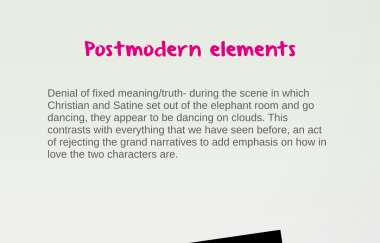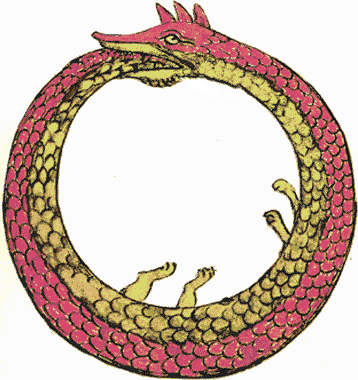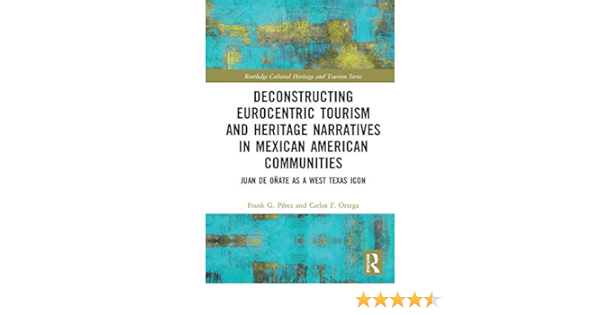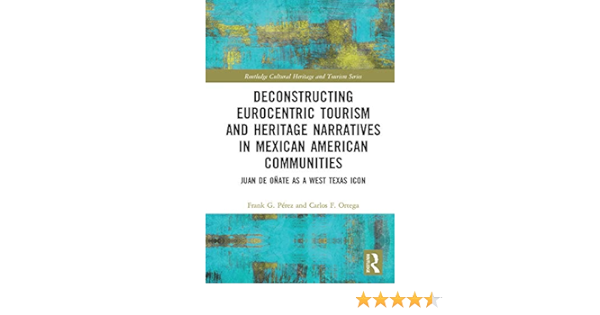Introduction
Postmodernism in literature is a literary movement that emerged in the mid-20th century and continues to influence contemporary writing today. Unlike its modernist predecessor, postmodern literature is characterized by a deliberate departure from traditional storytelling techniques and a willingness to challenge established conventions. In this article, we’ll explore the key features of postmodernism in literature and its impact on the way we perceive and engage with stories.
Postmodernism in literature is not just a historical relic; it’s a dynamic and enduring literary movement that emerged in the mid-20th century and continues to shape the landscape of contemporary writing. It stands as a profound departure from the modernist traditions that preceded it, as it deliberately defies established conventions and reimagines the very essence of storytelling. In this article, we embark on a journey to unravel the key features of postmodernism in literature and delve into its profound impact on the way we perceive, interpret, and engage with stories in today’s world.
A Playful and Self-Reflective Approach
One of the defining characteristics of postmodern literature is its playful and self-reflective nature. Postmodern authors often blur the lines between reality and fiction, challenging readers to navigate the narrative’s intricate web. They introduce metafictional elements, acknowledging the act of storytelling itself within the story. This self-awareness creates a dynamic and intellectually stimulating reading experience, inviting readers to question the boundaries of storytelling and the role of the author.
Fragmentation and Nonlinear Narratives
Postmodern literature revels in fragmentation and nonlinear narratives. It abandons the linear, cause-and-effect storytelling model of the past and instead presents narratives as disjointed, fragmented, and kaleidoscopic. This deliberate disruption of chronology and structure reflects the complexity and chaos of contemporary life, requiring readers to actively piece together the puzzle of the narrative.
Subversion of Authority and Meta-Narratives
Postmodern authors subvert traditional sources of authority, including established institutions and meta-narratives. They challenge prevailing ideologies, question societal norms, and deconstruct power structures. This critical examination of authority invites readers to reconsider their own beliefs and perspectives, fostering a more nuanced and critical engagement with the world around them.
Intertextuality and Cultural References
Intertextuality is a hallmark of postmodern literature, where authors weave a tapestry of cultural references, interweaving elements from literature, history, philosophy, pop culture, and more. This rich tapestry encourages readers to engage with the text on multiple levels, rewarding those who recognize and decode the references while allowing others to explore and discover new layers of meaning.
Irony and Satire
Irony and satire are powerful tools in the postmodern writer’s arsenal. They use humor and wit to critique society’s foibles, exposing the absurdity and contradictions of the human condition. This satirical lens provides a fresh perspective on familiar themes and challenges readers to question the status quo.
Impact on Contemporary Storytelling
Postmodernism’s influence on contemporary storytelling cannot be overstated. It has reshaped the way writers approach narrative structure, character development, and the relationship between author and reader. Postmodern elements are woven into a wide range of genres and mediums, from novels to films, television shows, and video games. It has expanded the possibilities of storytelling, offering a diverse and eclectic array of voices and perspectives that reflect the complexity of our interconnected world.
In conclusion, postmodernism in literature is a vibrant and enduring movement that continues to redefine the boundaries of storytelling. Its impact is felt not only in the works of celebrated postmodern authors but also in the diverse tapestry of contemporary narratives that challenge, provoke, and inspire. By embracing the playful, the fragmented, and the self-reflective, postmodern literature encourages us to view storytelling as a dynamic and ever-evolving art form, inviting us to explore the limitless possibilities of the written word.
Should you desire more in-depth information, it’s available for your perusal on this page: Engaging with Postmodernism
Postmodernism is often associated with the rejection of grand, all-encompassing narratives. Authors in this movement are skeptical of overarching truths and instead focus on the fragmented and subjective nature of reality. This rejection of grand narratives is evident in works like Thomas Pynchon’s “The Crying of Lot 49,” where the protagonist navigates a web of conspiracies and uncertainties, highlighting the elusive nature of truth.
Postmodernism’s rejection of grand narratives represents a fundamental shift in the way literature engages with the world. Instead of seeking overarching truths or universal meanings, postmodern authors recognize the subjective nature of reality and the multiplicity of perspectives.
In Thomas Pynchon’s “The Crying of Lot 49,” the protagonist, Oedipa Maas, finds herself entangled in a labyrinthine web of conspiracies, secret societies, and enigmatic symbols. Her journey becomes a metaphor for the postmodern condition, where the search for absolute truth unravels into a series of interconnected mysteries. Pynchon’s narrative style mirrors the confusion and uncertainty of the world Oedipa navigates, where truth remains elusive and multiple interpretations abound.
This rejection of grand narratives invites readers to question the very nature of storytelling and meaning-making. Postmodern literature prompts us to consider that there may not be a single, objective reality or a grand narrative that can explain everything. Instead, reality is constructed through individual perspectives, and meaning is subjective, varying from person to person.
In a world characterized by complexity and information overload, postmodernism offers a way to grapple with the ambiguity and contradictions of contemporary existence. By challenging the idea of absolute truth and embracing the fragmented and subjective nature of reality, postmodern literature encourages readers to engage critically with narratives, question assumptions, and appreciate the diversity of human experiences and interpretations. It reminds us that the search for truth is often a journey filled with uncertainty, where multiple versions of reality coexist, each with its unique validity.
For a comprehensive look at this subject, we invite you to read more on this dedicated page: Postmodernism and Organizational Research

Postmodern literature frequently employs metafiction and self-referentiality. Authors like Italo Calvino and Jorge Luis Borges incorporate elements that draw attention to the act of storytelling itself. These narratives often feature authors within their own stories or challenge the boundary between fiction and reality, prompting readers to question the nature of fiction and their role as readers.
Postmodern literature stands as a captivating realm where metafiction and self-referentiality reign supreme, inviting readers on a mind-bending journey through the intricate layers of narrative. Pioneering authors like Italo Calvino and Jorge Luis Borges masterfully wield these literary techniques to deconstruct traditional storytelling conventions and redefine the boundaries of fiction.
In the literary universe crafted by Italo Calvino, stories metamorphose into playful labyrinths of narrative self-awareness. Works such as “If on a winter’s night a traveler” and “Invisible Cities” are prime examples of his exploration of metafiction. Calvino not only blurs the lines between author and reader but also challenges the very concept of a linear narrative. Readers find themselves engaged in a delightful dance with the text, shifting between layers of reality and fiction, and grappling with the notion that stories are as much about the act of reading as they are about the narratives themselves.
Jorge Luis Borges, another luminary of postmodern literature, embarks on a relentless quest to unravel the mysteries of language and reality in his tales. His short stories, like “The Garden of Forking Paths” and “Tlön, Uqbar, Orbis Tertius,” often feature labyrinthine libraries, enigmatic manuscripts, and recursive narratives that defy conventional storytelling norms. Borges compels readers to become active participants in the creation of meaning, challenging their perception of reality and the very essence of authorship.
These narratives, born from the minds of Calvino and Borges, are a testament to the postmodern desire to interrogate the nature of fiction itself. They beckon readers to question their roles as passive consumers of stories, encouraging them to embrace the complexity and ambiguity of narrative. In doing so, postmodern literature not only challenges conventional literary forms but also prompts a deeper introspection into the nature of human consciousness and the power of storytelling as a reflection of our ever-shifting understanding of reality. As readers navigate the labyrinthine corridors of metafiction and self-referentiality, they emerge with a heightened appreciation for the boundless possibilities of literature and the limitless potential of the human imagination.
Looking for more insights? You’ll find them right here in our extended coverage: Experimental Narration in the Postmodern Detective Story: What a …

Intertextuality is a hallmark of postmodernism, with authors referencing and reimagining other literary works. Parody, or the playful imitation of established genres and styles, is also common. In works like Kurt Vonnegut’s “Slaughterhouse-Five,” the blending of science fiction, autobiography, and satire results in a unique narrative that defies genre categorization.
Intertextuality and parody, as prominent features of postmodern literature, underscore the intricate and self-aware nature of storytelling in this era. They represent a deliberate departure from the linear narratives of classical literature, emphasizing a more layered and multifaceted approach to storytelling.
In the realm of intertextuality, postmodern authors engage in a literary dialogue with their predecessors. They weave a rich tapestry of references, allusions, and reimaginations of other literary works into their own narratives. This not only pays homage to the literary canon but also invites readers to participate actively in the storytelling process. It encourages readers to explore connections and interdependencies between texts, inviting them to unearth hidden meanings and discover new dimensions within the narrative.
Parody, a playful and often satirical imitation of established genres and styles, is another hallmark of postmodern literature. It is a form of creative expression that blurs the lines between homage and mockery. Authors use parody to subvert traditional literary conventions, exposing their absurdities and limitations. This subversion serves as both a critique and a celebration of established norms, encouraging readers to question the boundaries of genre and the assumptions that underlie them.
Kurt Vonnegut’s “Slaughterhouse-Five” is a shining example of how postmodern literature embraces intertextuality and parody to create a narrative that defies easy categorization. In this novel, Vonnegut masterfully blends elements of science fiction, autobiography, and satire. Through the protagonist Billy Pilgrim, the author navigates the horrors of war, time travel, and the absurdity of human existence with a unique narrative voice that challenges conventional storytelling.
The result is a work of art that transcends genre boundaries, inviting readers to ponder the complex interplay between fiction and reality, the past and the present, and the individual and the collective. “Slaughterhouse-Five” stands as a testament to the postmodern belief that storytelling is a dynamic, evolving process, and that there are no fixed rules or limitations when it comes to the exploration of human experiences through literature.
In the world of postmodernism, intertextuality and parody are not mere literary devices; they are reflections of a deeper philosophical inquiry into the nature of reality, representation, and the intricate relationship between author, text, and reader. Through these techniques, postmodern literature encourages us to embrace the ambiguity and complexity of the world and to approach storytelling with a spirit of curiosity and open-mindedness.
Don’t stop here; you can continue your exploration by following this link for more details: How Postmodernism Has Changed The English Literary Landscape …

Postmodern literature often disrupts linear storytelling by employing temporal dislocation and nonlinear narratives. Authors like Salman Rushdie, in “Midnight’s Children,” challenge the conventional flow of time, creating narratives that meander through history and memory, emphasizing the subjectivity of experience.
Postmodern literature stands as a genre that thrives on subverting traditional storytelling conventions. It boldly ventures into the realm of temporal dislocation and nonlinear narratives, reshaping the very structure of the storytelling process. One of the luminaries of this movement is Salman Rushdie, whose magnum opus, “Midnight’s Children,” is a testament to the boundary-breaking nature of postmodern literature.
In “Midnight’s Children,” Rushdie crafts a narrative that is a testament to the multifaceted, fragmented nature of human existence. The story meanders through time, seamlessly weaving together historical events, personal memories, and the vivid tapestry of the protagonist’s inner world. In doing so, it challenges the linear flow of time that is so ingrained in conventional storytelling.
The novel’s protagonist, Saleem Sinai, is not just a character but a vessel through which the past, present, and future converge. His story is a reflection of the larger narrative structure, where temporal dislocation becomes a tool to emphasize the subjectivity of experience. This subjectivity highlights that our understanding of events and the way we construct our own histories are deeply rooted in our individual perspectives and memories.
“Midnight’s Children” is not a passive reading experience; it’s an immersive journey through a kaleidoscope of narratives. Rushdie’s masterful use of magical realism adds another layer of complexity, blurring the lines between reality and fantasy. The result is a narrative that challenges readers to question the very nature of storytelling and the reliability of memory.
In the realm of postmodern literature, authors like Salman Rushdie pave the way for readers to embrace the ambiguity and intricacy of the human experience. They remind us that life is not a linear path but a web of interconnected moments, memories, and interpretations. Through nonlinear narratives and temporal dislocation, postmodern literature invites us to explore the richness of subjectivity and the ever-evolving nature of our own stories. It encourages us to appreciate the beauty of narratives that don’t conform to conventional structures, and in doing so, it expands our understanding of the boundless possibilities of storytelling.
For a comprehensive look at this subject, we invite you to read more on this dedicated page: Courses | Comparative Literature

Postmodernism reflects the hyperreality of consumer culture, where the distinction between reality and the simulated becomes blurred. In Don DeLillo’s “White Noise,” for example, the characters are bombarded by media and advertising, leading to a sense of disorientation and detachment from the real world.
Postmodernism, as a literary and cultural movement, offers a profound exploration of the complexities and contradictions of contemporary society. It delves deep into the fabric of our hyperreal world, where the line between reality and the simulated is often indistinguishable. Don DeLillo’s masterpiece, “White Noise,” stands as a poignant example of postmodern literature’s ability to capture and critique this phenomenon.
In “White Noise,” DeLillo takes us on a mesmerizing journey through the lives of its characters, who find themselves immersed in a cacophony of media and advertising, constantly bombarded by messages and images. The novel serves as a compelling mirror to our own lives, where screens, advertisements, and social media have become pervasive, shaping our perceptions and desires.
The characters in “White Noise” grapple with a sense of disorientation and detachment from the real world. They are enveloped in a hyperreality where the simulated often takes precedence over the authentic. This hyperreality is not limited to the confines of the novel; it reflects the very nature of our contemporary existence. We live in an era where virtual experiences, online personas, and curated images can sometimes eclipse our genuine interactions and experiences.
DeLillo’s narrative underscores the idea that in a world dominated by consumer culture and media saturation, our identities and desires are shaped by external forces. We are bombarded by products, messages, and advertisements that promise fulfillment, but often leave us feeling empty and disconnected from our true selves.
However, “White Noise” does more than merely critique the hyperreality of consumer culture; it invites us to question and reflect upon our own relationship with the world around us. It challenges us to navigate the noisy, often disorienting landscape of modern existence and seek moments of clarity and authenticity amidst the chaos.
In this sense, postmodern literature, exemplified by works like “White Noise,” serves as a powerful commentary on the human condition in an era characterized by information overload and a relentless pursuit of the next big thing. It reminds us to pause, reflect, and find meaning in a world where the boundaries between the real and the simulated continue to blur.
To delve further into this matter, we encourage you to check out the additional resources provided here: Postmodernism and Advertisement – Literary Theory and Criticism

Postmodern narratives often embrace fragmentation and multivocality, presenting multiple perspectives and voices within a single work. This technique is evident in works like William Faulkner’s “The Sound and the Fury,” where the narrative shifts between different characters’ perspectives, highlighting the subjective nature of storytelling.
In the realm of literature, postmodernism serves as a vibrant canvas for the exploration of narrative innovation. One of its defining features is the embrace of fragmentation and multivocality, a narrative approach that revels in the complexity of human experience. This technique, perhaps best exemplified in works like William Faulkner’s “The Sound and the Fury,” is a literary marvel that invites readers into a world where storytelling takes on a kaleidoscopic quality.
In “The Sound and the Fury,” Faulkner masterfully employs this technique, shifting the narrative lens between different characters’ perspectives. Through the voices of the Compson family members, readers traverse a landscape of individual viewpoints, each colored by their unique experiences, memories, and emotions. This narrative kaleidoscope not only challenges the conventional linear storytelling but also invites readers to grapple with the subjective nature of human perception.
The result is a literary experience that mirrors the intricate mosaic of real-life storytelling, where each person brings their own lens and voice to the narrative table. Postmodern narratives like these remind us that there is rarely a singular, objective truth in human experiences; instead, truth often emerges from the interplay of diverse voices and perspectives.
In embracing fragmentation and multivocality, postmodern literature beckons readers to explore the multifaceted dimensions of storytelling. It encourages us to question the stability of a singular narrative voice and embrace the richness of a narrative choir. Faulkner’s work, among others, stands as a testament to the enduring power of literature to reflect the complex tapestry of human existence, one fragmented and multivocal story at a time.
For a comprehensive look at this subject, we invite you to read more on this dedicated page: Critical Perspectives on Bell Hooks (Critical Social Thought)

Conclusion
Postmodernism in literature challenges the traditional boundaries of storytelling and invites readers to engage with narratives in new and unconventional ways. By deconstructing grand narratives, employing metafiction, and embracing intertextuality, postmodern authors offer a unique lens through which to view the complexities of the human experience. While postmodern literature may be characterized by its rejection of conventions, it has become an essential and enduring part of the literary landscape, shaping the way we think about storytelling and the nature of truth itself.
Postmodernism in literature is a literary movement that serves as a powerful catalyst for reimagining the art of storytelling. Its influence extends beyond the boundaries of traditional narrative forms, opening doors to innovative and unconventional approaches to literature.
One of the central tenets of postmodern literature is its ability to deconstruct grand narratives. In doing so, it challenges the established norms of storytelling, offering readers a fresh perspective on the complexities of the human experience. Postmodern authors like Jeanette Winterson in “Oranges Are Not the Only Fruit” or Milan Kundera in “The Unbearable Lightness of Being” dismantle conventional narrative structures, embracing nonlinear timelines and fragmented storytelling to mirror the fragmented nature of contemporary life. Through these narrative experiments, postmodern literature encourages readers to question the linear and cohesive narratives that often simplify the intricacies of human existence.
The use of metafiction is another hallmark of postmodernism. Authors employ self-referential techniques, blurring the lines between fiction and reality. Works like John Barth’s “Lost in the Funhouse” playfully explore the act of storytelling itself, often challenging the very essence of authorship and reader engagement. These metafictional narratives compel readers to become active participants in the creation of meaning, further highlighting the malleable nature of truth and interpretation.
Intertextuality, the interweaving of references to other literary works, becomes a tapestry in postmodern literature. Authors draw from a diverse pool of sources, recontextualizing and reimagining established texts to create something entirely new. This intertextual approach is a testament to the interconnectedness of human culture and the ever-evolving conversation that literature engages in. Postmodern works, like Salman Rushdie’s “Midnight’s Children,” evoke a sense of dialogue with the past, urging readers to explore the layers of meaning that emerge from these literary connections.
While postmodern literature may be characterized by its rejection of conventions, it has emerged as an essential and enduring part of the literary landscape. Its legacy is not limited to its immediate time but continues to shape the way we think about storytelling and the nature of truth itself. In an era defined by complexity, diversity, and the blurring of boundaries, postmodern literature provides a lens through which we can navigate the intricate tapestry of the human experience, reminding us that the search for meaning is an ongoing and multifaceted journey.
Should you desire more in-depth information, it’s available for your perusal on this page: Literary Theory | Internet Encyclopedia of Philosophy
More links
For a comprehensive look at this subject, we invite you to read more on this dedicated page: Transgressive Literature vs. Postmodern Literature: Challenging …
